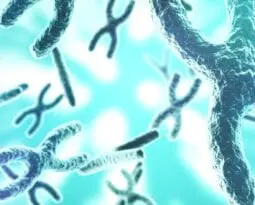Ethics of Law Enforcement and Genetic Data
Selected resources from The Hastings Center.
Bioethics Briefings:
Law Enforcement and Genetic Data
Law enforcement has collected and stored a limited amount of information from DNA from arrestees and convicted criminals in forensic databases, like CODIS, for many years. These cover a limited part of the population, but law enforcement is increasingly turning to other sources of DNA for investigations. Direct-to-consumer genetic testing expands the power of forensic searches because these results contain more data than CODIS and typically represent different parts of the population. Read our briefing to consider: What are the ethical issues with law enforcement access to consumer DNA databases?
From Hastings Bioethics Forum:
- Collecting Migrant Children’s DNA: A Troubling, but Predictable, Trend in the U.S.Recent reports reveal that the U.S. government is systematically collecting DNA from migrant children, some as young as 4 years old, and storing it (perhaps indefinitely) in the FBI’s national criminal database….
- Do You Want the Police Snooping in Your DNA?In late April, a suspect thought to be the Golden State Killer, a man who had eluded police for decades after committing a string of murders and rapes in Northern California and…
- Addressing Questions About DTC Genetic Tests and PrivacyThe process is fairly simple. You select one of the companies that offer direct-to-consumer genetic tests; pay online; receive a neatly packed kit that contains a tube designed to collect your spit;…
- Read the Fine Print Before Sending Your Spit to 23andMeEditor’s note: This essay responds to an invitation (issued here and here) to submit commentaries on the ethical implications of partnerships between social media companies and biomedical researchers. The invitation is ongoing. …
- DNA Phenotyping and Baby’s First PortraitSome researchers are at work generating images of people’s faces by relying on DNA samples alone, in a process known as DNA phenotyping.The process involves linking genetic traits and their typical manifestations in…
From Hastings Center Report:
Genetic Data Aren’t So Special: Causes and Implications of Reidentification
First published: 23 October 2020
Abstract
Genetic information is widely thought to pose unique risks of reidentifying individuals. Genetic data reveals a great deal about who we are and, the standard view holds, should consequently be treated differently from other types of data. Contrary to this view, we argue that the dangers of reidentification for genetic and nongenetic data—including health, financial, and consumer information—are more similar than has been recognized. Before different requirements are imposed around sharing genetic information, proponents of the standard view must show that they are in fact necessary. We further argue that the similarities between genetic and nongenetic information have important implications for communicating risks during consent for health care and research. While patients and research participants need to be more aware of pervasive data-sharing practices, consent forms are the wrong place to provide this education. Instead, health systems should engage with patients throughout patient care to educate them about data-sharing practices.
Leveling the Playing Field: Closing the Gap in Public Awareness of Genetics between the Well Served and Underserved
First published: 21 September 2016
Abstract
The impact of genetic technologies is being felt in many aspects of society, including medicine and the legal system, as well as the personal lives of individuals. How do we make sure that all segments of the population are equally aware of these technologies and have ample opportunity to voice opinions and shape the future? One ongoing effort, which began ten years ago and in which we are directly involved, is the Personal Genetics Education Project, a nonprofit initiative housed within and largely supported by the Department of Genetics at Harvard Medical School. The goal of pgEd is to raise public awareness and promote conversations about the benefits and implications of the genetics revolution in ways that are inclusive of all voices regardless of socioeconomic, educational, ethnic, cultural, or religious background. This essay describes our approach and experience in hopes that they will be of help to others engaged in similar efforts.
All That Glitters Isn’t Gold
First published: September 2011
Abstract
The increasing use of DNA evidence has revolutionized criminal investigations. Over the past several years, DNA forensics—once thought to be a less reliable identifier than other forensic techniques, such as latent fingerprinting—have now become the evidentiary gold standard in criminal prosecutions. At the same time, non-DNA-based forensic techniques that have incarcerated thousands are coming under fire.
The policy implications of this shifting dynamic—what Michael Lynch and colleagues call an “inversion of credibility”—can be most clearly seen in the National Research Council’s 2009 report, Strengthening Forensic Science in the United States: A Path Forward. Conducted at Congress’s request by a highly esteemed committee, this report—over three hundred pages—assesses the current state of forensic science. The committee found remarkable shortcomings in what they call the forensic science knowledge base, noting that the scientific theories and methods used to substantiate many forensic claims frequently cannot withstand close scrutiny.





